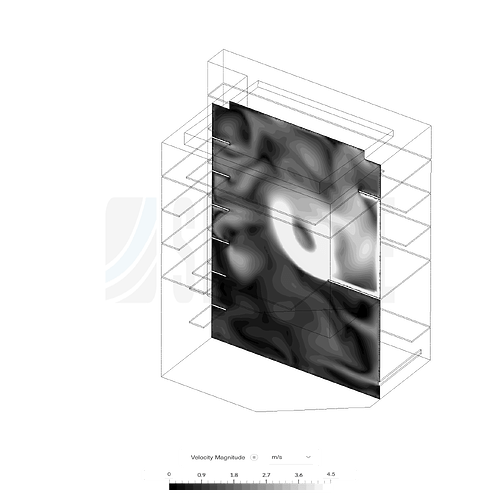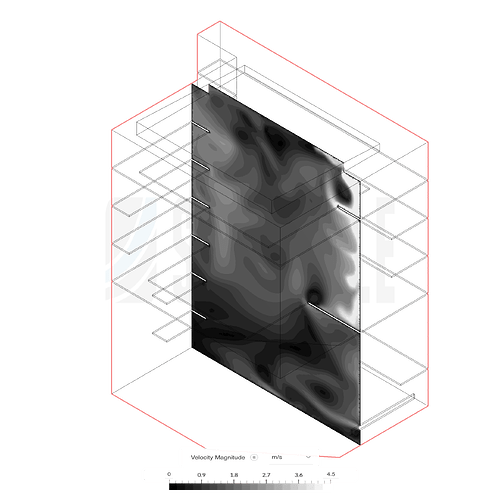Hi there,
I am having trouble understanding the difference between “Natural convection inlet/outlet” and “Pressure outlet” Boundary Conditions. I would really like to understand the difference between the two of them for future projects. I would also like to know when it is convenient to use one or the other.
For instance, I have been working on the simulation of the thermal conditions inside a building and I ran the Simulation twice with the exact same settings EXCEPT for the outlet boundary conditions: for the first simulation (CHT_1) I used a “Natural convection inlet/outlet” BC and for the second simulation (CHT_2) I used a “Pressure outlet” BC. (These outlets are supposed to be open windows in both simulations).
I was wondering why the results of the Velocity Magnitude (when post-processed) were so different, when in fact, I thought they should be quite similar.
Here is the link to the project I am talking about where you will find both simulations:
I am also attaching two images (one of each simulation) of the Velocity Magnitude difference I am talking about. Both models were clipped in the EXACT same position.
Thank you very much in advance,
Juan
1 Like
Hello @juanmfernandes,
That’s a quite detailed description 
In terms of differences, I’d say that the backflow treatment is the biggest difference between the two. Pressure outlet blocks backflow completely, by using an “inlet-outlet” configuration for velocity, with a value of 0, 0, 0.
Natural convection inlet/outlet allows backflow (as the name suggests), so it’s best to use when we don’t know if the flow goes in or out of the system, OR when we expect backflow through the boundary (like a recirculation). For more details on the mathematical implementation, I’d recommend visiting this page.
Cheers
1 Like
Hi @RicardoParis ,
Thank you very much for your answer. I came up with two questions as I was reading your answer:
1- So, in the case of my example, where these outlets are open windows, would you suggest using a “Natural convection inlet/outlet” BC?
2- In the case I use a “Natural convection inlet/outlet” BC for these windows in my example, how does the software actually know what amount of air should flow (or backflow) through them? I mean, given that I am working on an internal flow simulation, I assume the exterior is vacuum.
Thank you very much again,
Juan
Hi! Yes, natural convection should work nicely in your case.
To answer your second question: this is an iterative process, where the solver updates the results (based on the results from the previous iteration and the newly calculated solution). The solver tries to achieve a state of equilibrium, where the flow is stable in the entire domain.
In short, the solver doesn’t know beforehand what the results will be. Of course we have some ground rules here, such as the continuity of mass, momentum and energy. But the final solution comes from the iterative process that a steady-state simulation consists of.
1 Like

